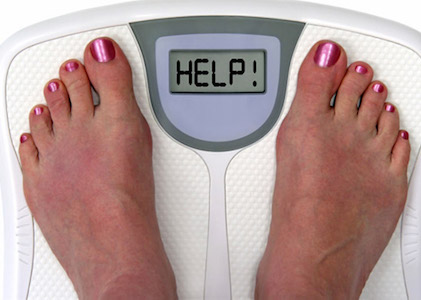
7 Ways to Break Through a Weight Loss Plateau
By Claire Georgiou, Reboot Naturopath, B.HSc ND
Ever wonder why those first few kilos or pounds easily come off then all of a sudden the weight loss comes to a screeching halt? You ask yourself, “What I’m I doing wrong?” The answer: Nothing. It’s normal!
Unfortunately, when the plateau hits many people give up and convince themselves they have a slow metabolism or something is wrong with their new healthy lifestyle changes and then they QUIT.
Don’t despair! This is a normal part of any weight loss cycle. If you talk to most people who have lost a significant amount of weight and reached their goal, they have likely experienced 2-3 weight loss plateaus.
It’s important to understand the leaner you become the slower the weight loss will be. The desired changes are occurring, and within a few days or a few weeks weight loss will resume at a normal healthy pace.
Age, weight, length of time you’ve been overweight, and gender all influence the frequency and length of time a plateau can last. Other factors that influence weight loss plateaus are increased visceral fat such as a fatty liver and other organ and visceral fat. As your body replaces the organ fat with healthy tissue this will also be a period where weight loss may not occur. During weight loss insulin and leptin sensitivity will be improving as visceral fat is replaced with healthy organ tissue. This is a very important step for long-term weight management. Here is more on blood sugar control while Rebooting.
I often see immense improvement on blood tests while the patient has no immediate weight loss changes. Reductions in cholesterol, triglycerides, blood sugar, insulin and elevated liver enzymes will return to normal levels while there may be no weight loss for a period of time. As the dietary changes improve the metabolism, the weight will then follow!
There are a number of excellent suggestions given in our weight loss plateau guidelines and here are a few extras:
- Change your style of exercise. Just like our bodies can grow accustomed to our eating plans they can also be accustomed to our exercise plan, so if you always walk try running for short intervals, riding a bike or going for a swim. Light weight bearing exercises can also give the metabolism that extra boost.
- Learn to relax. Stress can have a negative impact on your weight loss as cortisol a stress hormone can slow weight loss down.
- Think healthy rather than thin. Remind yourself of all the wonderful good you are doing for your body and your long-term health. The weight will follow.
- Try new juice recipes and ingredients. Give yourself a broader spectrum of nutrients if you are drinking the same thing too often. Always keep the vegetable to fruit split 80% to 20%.
- Increase your juices and whole foods. Taking in too few calories can slow your metabolism down, but increasing your nutrients and calories may give the metabolism that extra kick that it may need.Your body can adjust to your new eating and calorie intake after a few weeks to a few months so you can shake it up a little and have a few days where you increase your intake. This is called calorie recycling or zigzagging when you increase consumption for a day then reduce again for 4-5 days to avoid the starvation mode.
- Visualize and see yourself at a healthy weight. Mind over matter. Think, believe and visualize yourself healthy and at your desired weight.
- Be patient. Stay strong and motivated and know that just because the scale isn’t moving as fast as you want it to, your body is achieving greater health which in the long run means a more sustainable weight loss goal will be achieved.